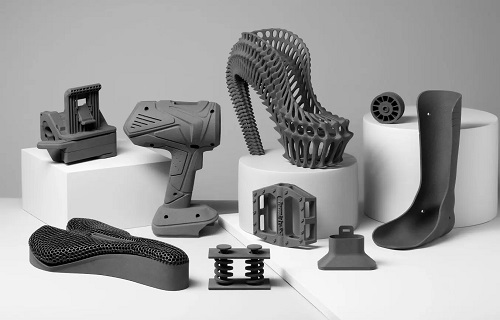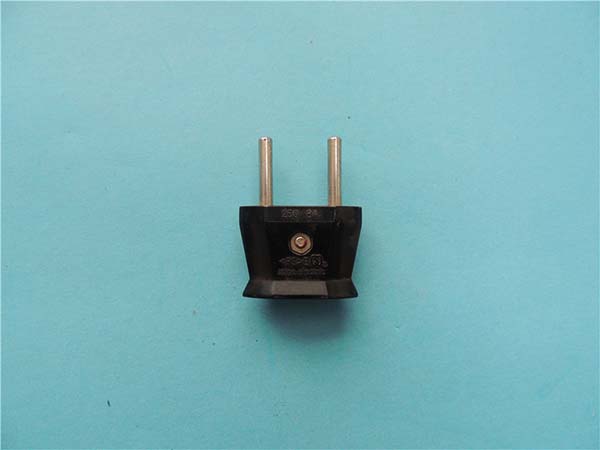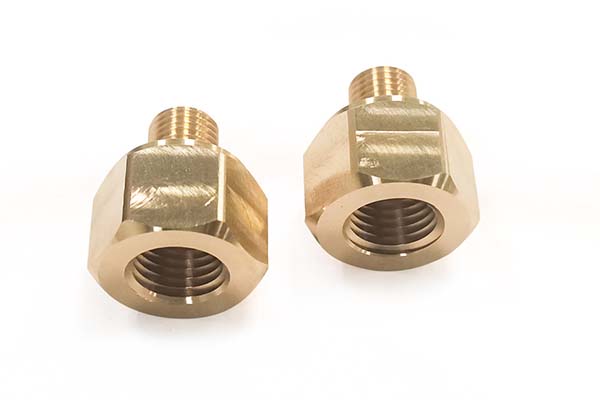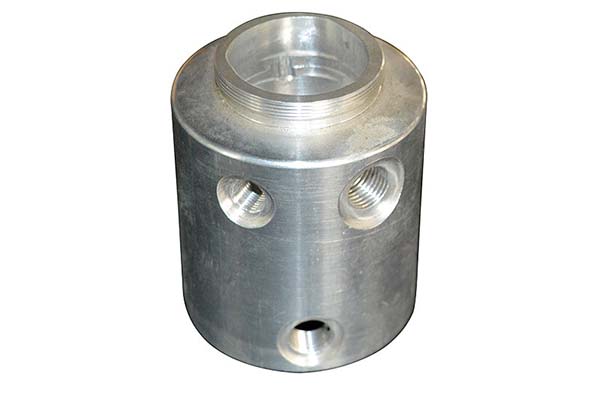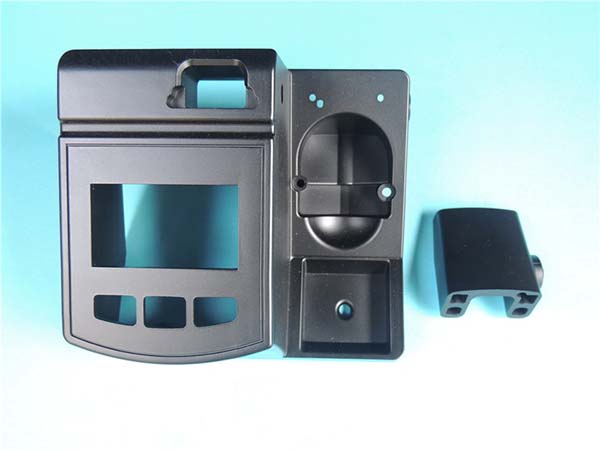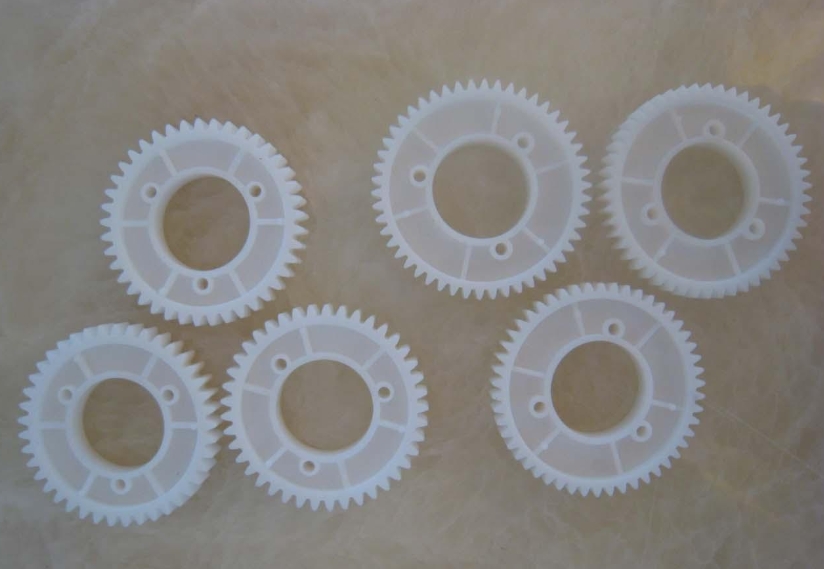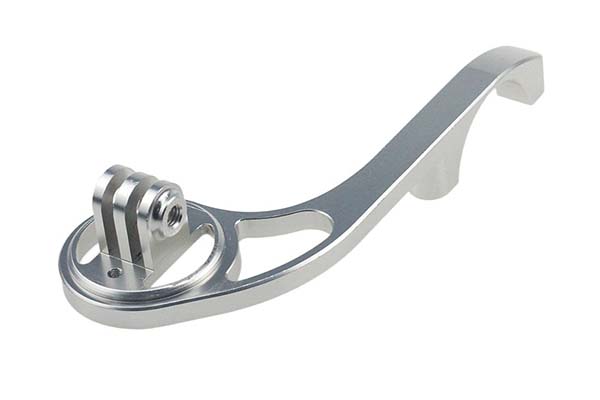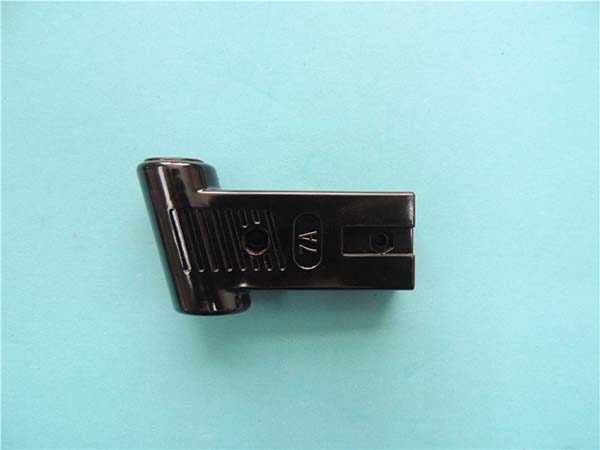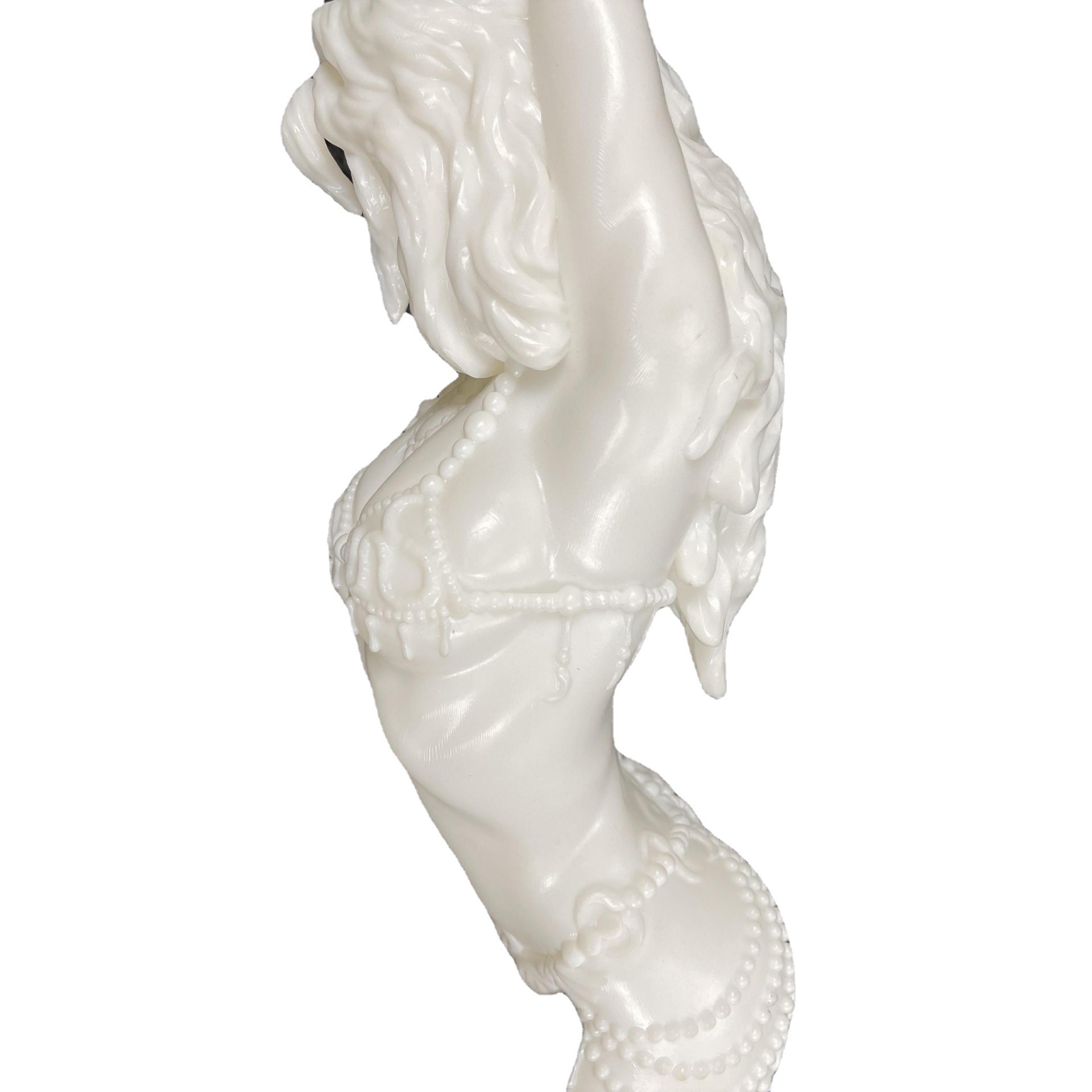Introduction
In the dynamic landscape of modern industrial manufacturing, 3D printing services have emerged as a revolutionary force, reshaping the traditional paradigms of production. This technology, also known as additive manufacturing, is not merely an incremental improvement but a fundamental shift in the way products are designed, prototyped, and produced. It has the potential to disrupt multiple industries, from aerospace and automotive to healthcare and consumer goods, by introducing unprecedented levels of design freedom, production agility, and cost - effectiveness. As we delve deeper into the world of 3D printing in industrial manufacturing, we will explore how it is reinventing the sector, the challenges it faces, and the opportunities it unlocks for the future.
The Basics of 3D Printing
1. Definition and Principle
3D printing, also known as additive manufacturing, is a revolutionary manufacturing process that builds three - dimensional objects from a digital model. Unlike traditional subtractive manufacturing methods, which remove material from a larger block to create a desired shape, 3D printing works on an additive principle. It constructs objects layer by layer.
The process begins with a 3D model, which is typically created using computer - aided design (CAD) software or obtained through 3D scanning. This digital model is then sliced into numerous thin cross - sectional layers by specialized software. A 3D printer reads these sliced data and deposits materials, such as plastics, metals, ceramics, or even biological materials, layer upon layer, following the precise pattern of each cross - section. As the layers are gradually built up, a three - dimensional object is formed. For Yigu Technology example, in the production of a simple plastic figurine, the 3D printer would start from the bottom layer, depositing the plastic material in the shape defined by the first cross - section. Then, it would move up and create the next layer on top of the previous one, and so on, until the entire figurine is completed. This additive approach not only enables the creation of complex geometries that are extremely difficult or impossible to achieve with traditional subtractive methods but also significantly reduces material waste, as only the necessary amount of material is used.
2. Key 3D Printing Technologies
There are several key 3D printing technologies, each with its own unique working methods and characteristics.
- Fused Deposition Modeling (FDM): FDM is one of the most common and accessible 3D printing technologies, often used in desktop 3D printers. In FDM, a spool of thermoplastic filament, such as acrylonitrile butadiene styrene (ABS) or polylactic acid (PLA), is fed into a heated extruder nozzle. The nozzle heats the filament to its melting point and then extrudes the molten material in a precise pattern onto a build platform. As the material is extruded, it cools and solidifies immediately, bonding with the previously deposited layers. For instance, when printing a small mechanical part, the FDM printer will follow the sliced instructions to deposit the molten plastic layer by layer, gradually forming the shape of the part. FDM is known for its relatively low cost, ease of use, and wide range of available materials. However, it generally offers lower resolution and surface finish compared to some other technologies, and complex models may require support structures to be printed simultaneously to hold up overhanging parts during the printing process.
- Stereolithography (SLA): SLA was one of the first 3D printing technologies to be developed. It uses a vat of liquid photopolymer resin and a UV laser. The UV laser traces the cross - sectional pattern of the object onto the surface of the liquid resin, causing the resin to cure (harden) and solidify. After one layer is completed, the build platform is lowered slightly, and a new layer of liquid resin is spread over the previously cured layer. The laser then cures the next layer on top of the previous one. This process is repeated until the entire 3D object is created. SLA is highly regarded for its high - resolution printing capabilities, which can produce very detailed and smooth - surfaced objects. It is often used in applications where precision is crucial, such as jewelry design, dental models, and high - detail prototypes. However, the cost of SLA printers and resins is usually higher than that of FDM, and the post - processing of SLA prints may involve additional steps to fully cure the remaining resin and clean the printed object.
- Selective Laser Sintering (SLS): SLS uses a high - power laser to sinter (fuse) powdered materials, such as nylon, metal powders, or ceramic powders. The powder is spread evenly across a build platform in a thin layer. The laser scans the cross - sectional pattern of the object onto the powder layer, heating and fusing the powder particles together at the points where the laser beam hits. As each layer is sintered, a new layer of powder is spread on top, and the process continues. SLS has the advantage of being able to print complex, high - strength parts without the need for support structures, as the unsintered powder can support overhanging features during the printing process. It can work with a wide variety of materials, making it suitable for applications in industries like aerospace, automotive, and tooling. However, SLS printers are relatively expensive, and the post - processing may involve removing the unsintered powder from the printed object, which can be time - consuming. Additionally, the surface finish of SLS - printed parts may be rough and may require further finishing operations.
Reinvention in Industrial Manufacturing
1. Design Freedom Expansion
3D printing has shattered the design constraints imposed by traditional manufacturing methods. In traditional manufacturing, processes like casting, forging, and machining often limit the complexity of designs due to the need for tool access, draft angles, and the removal of excess material. For Yigu Technology example, in metal forging, the shape of the die and the forces applied during the forging process restrict the creation of intricate internal structures.
However, 3D printing allows designers to break free from these limitations. It enables the creation of complex internal structures, such as lattice designs, which are optimized for strength - to - weight ratios. Lattice structures can significantly reduce the weight of a component while maintaining or even enhancing its mechanical properties. This is especially crucial in industries like aerospace, where every kilogram of weight reduction can lead to substantial fuel savings and improved performance. For instance, in the design of aircraft engine components, 3D printing can produce parts with complex cooling channels that are precisely tailored to the component's heat - dissipation requirements. These cooling channels can have irregular shapes and sizes, and their placement can be optimized for maximum efficiency, something that is nearly impossible to achieve with traditional manufacturing techniques. Another example is in the field of architecture, where 3D printing enables the construction of buildings with unique, free - form facades that were previously only possible in the realm of digital design concepts.
2. Cost - Efficiency Improvement
Although the initial investment in 3D printing equipment can be substantial, a long - term perspective reveals significant cost - efficiency improvements.
Firstly, 3D printing minimizes material waste. Traditional manufacturing often involves removing large amounts of material from a larger block to create the desired shape, resulting in significant waste. In contrast, 3D printing is an additive process that only uses the exact amount of material required for the object. For example, in the production of metal parts, traditional machining might waste up to 90% of the raw material, while 3D printing can achieve material utilization rates of over 90% in some cases. This not only reduces the cost of raw materials but also has environmental benefits by minimizing the need for resource extraction and waste disposal.
Secondly, 3D printing can greatly shorten the research and development cycle. In traditional manufacturing, developing a new product often requires the creation of expensive molds and prototypes, which can take a long time. With 3D printing, companies can quickly produce prototypes directly from digital models. This allows for rapid iteration of designs, as changes can be made to the digital model and a new prototype can be printed within a short period. For Yigu Technology example, a consumer electronics company can use 3D printing to quickly create different versions of a product enclosure to test ergonomics, aesthetics, and functionality. This speeds up the product development process, getting products to market faster and reducing the time - to - revenue.
Moreover, 3D printing enables on - demand production, which significantly reduces inventory costs. Instead of producing large quantities of products in advance and storing them in warehouses, companies can print products as they are ordered. This eliminates the need for large - scale warehousing facilities and reduces the risk of overstocking or product obsolescence. For instance, a medical device manufacturer can keep digital designs of its products and print replacement parts only when they are needed, rather than maintaining a large inventory of spare parts.
3. Customization Realization
3D printing has made personalized customization a reality in industrial manufacturing. In traditional mass - production manufacturing, customization is often costly and time - consuming, as it may require retooling production lines or creating unique molds for each customized product. This has limited customization to high - end products or very small - scale production runs.
In the medical industry, 3D printing is being used to create customized implants. For Yigu Technology example, hip and knee implants can be 3D - printed to precisely match the patient's unique bone structure. This improves the fit and functionality of the implant, reducing the risk of complications and improving the patient's quality of life. Additionally, dental crowns and bridges can be customized using 3D printing, providing a more comfortable and aesthetically pleasing solution for patients.
In the automotive industry, 3D printing allows for the customization of interior components. Customers can choose the shape, color, and texture of their car seats, dashboard elements, and other interior parts. A luxury car manufacturer might use 3D printing to create personalized interior trim pieces for its high - end models, adding a unique touch for each customer. This level of customization not only meets the diverse needs and preferences of consumers but also provides a competitive edge for companies in the market.
4. Supply Chain Transformation
3D printing is driving a transformation in the supply chain by enabling distributed manufacturing. In traditional manufacturing, products often go through a long and complex supply chain. Raw materials are sourced from different locations, transported to manufacturing plants, where they are processed into components, and then these components are further assembled into finished products and distributed to markets around the world. This long - distance transportation and multiple - stage production process not only incurs high transportation costs but also makes the supply chain vulnerable to disruptions such as natural disasters, geopolitical issues, and trade disputes.
With 3D printing, manufacturing can be decentralized. Digital design files can be sent directly to local 3D printing facilities, where the products are printed on - site. For example, a company that sells consumer goods can have a network of 3D printing service providers in different regions. When an order is received, the digital design of the product is sent to the nearest 3D printing facility, which then prints and delivers the product to the customer. This reduces the need for large - scale centralized manufacturing plants and long - distance transportation of finished products.
Furthermore, in the case of spare parts supply, 3D printing can be a game - changer. Instead of stocking a large inventory of spare parts in warehouses around the world, companies can store digital designs of the parts. When a spare part is needed, it can be printed on - demand, reducing the inventory holding costs and the time required to deliver the spare part. For example, an aircraft maintenance company can use 3D printing to quickly produce spare parts for its planes, minimizing the aircraft's downtime. This distributed manufacturing model enabled by 3D printing not only reduces costs but also enhances the resilience and agility of the supply chain, making it better able to respond to changing market demands and unforeseen disruptions.
Case Studies in Different Industries
1. Aerospace and Defense
In the aerospace and defense industries, 3D printing has emerged as a game - changing technology. NASA, for Yigu Technology example, has been at the forefront of 3D printing applications in space - related manufacturing. They have used 3D printing to produce rocket engine components, such as fuel nozzles. These nozzles have complex internal geometries with intricate channels for fuel flow, which are crucial for optimizing engine performance. Traditional manufacturing methods would struggle to create such complex designs, often resulting in high - cost, time - consuming production processes. With 3D printing, these components can be produced in a more cost - effective and time - efficient manner.
Another example is in the production of lightweight components for aircraft. Boeing has utilized 3D printing to manufacture wing brackets and other structural parts. By using 3D - printed lattice structures, these components can achieve a significant reduction in weight while maintaining or even enhancing their structural integrity. This lightweighting not only improves the fuel efficiency of the aircraft but also reduces maintenance costs over the long term. In the defense sector, 3D printing enables the on - demand production of spare parts. For military operations in remote areas, having the ability to quickly print replacement parts on - site can greatly reduce equipment downtime and improve the operational readiness of the military forces.
2. Automotive
The automotive industry has also embraced 3D printing to revolutionize its manufacturing processes. Volkswagen, for instance, has used 3D printing to create customized engine parts. These parts can be designed to meet specific performance requirements, such as improving fuel efficiency or increasing power output. The ability to rapidly prototype these engine components through 3D printing allows for faster development cycles. Engineers can quickly test different design iterations, make adjustments to the digital model, and print new prototypes, all within a short period. This accelerates the research and development process and brings new and improved automotive products to the market more quickly.
In addition to engine parts, 3D printing is also being used for the production of chassis components. Some high - end automotive manufacturers are exploring the use of 3D - printed carbon - fiber - reinforced parts for chassis construction. These parts can be designed to have unique shapes that optimize strength and rigidity while minimizing weight. This not only enhances the vehicle's performance in terms of handling and speed but also contributes to better fuel economy. Moreover, 3D printing enables the customization of interior components. Customers can have their car seats, dashboard trims, and center consoles 3D - printed to their exact preferences, whether it's for ergonomic reasons, aesthetic appeal, or to match a specific lifestyle.
3. Medical and Biotech
In the medical and biotech fields, 3D printing has opened up new frontiers. For custom prosthetics, companies like Miracare are using 3D printing to create maxillofacial prostheses for patients who have suffered from accidents, cancer, or congenital anomalies. By capturing detailed images of the patient's face, they can construct an accurate prosthetic using CAD software. Then, through 3D printing combined with advanced manufacturing techniques, they can create a prosthesis that precisely matches the patient's skin color and texture, eliminating the need for traditional casting and painting processes. This provides a more comfortable and natural - looking solution for patients.
In the area of implants, 3D - printed PEEK (polyetheretherketone) cranial plates have excellent biocompatibility and can be customized to fit the damaged area of a patient's skull precisely. These plates can significantly restore the appearance and function of the skull, reducing surgery time and postoperative complications. 3D printing is also making waves in drug delivery systems. Scientists are developing complex, patient - specific drug delivery devices using 3D printing technology. These devices can be designed to release drugs at a controlled rate, targeting specific areas of the body more effectively. Additionally, in tissue engineering, 3D - printed bio - scaffolds are being used to support the growth of cells and tissues. These scaffolds can be customized to mimic the natural extracellular matrix of different tissues, promoting tissue regeneration and repair.
4. Construction and Architecture
The construction and architecture industries are also starting to benefit from 3D printing technology. In Dubai, a 3D - printed office building was constructed, demonstrating the potential of this technology in large - scale construction. The building was printed using a large - scale 3D printer that deposited layers of a special concrete - like material. This process allowed for the creation of complex architectural features that would have been extremely difficult and costly to achieve with traditional construction methods.
3D printing in construction can significantly reduce labor costs. Since much of the construction process is automated through 3D printing, fewer workers are required on - site. It also reduces construction time. For example, a small - scale 3D - printed house can be constructed in a matter of days, compared to weeks or months with traditional building methods. In architecture, 3D printing enables architects to bring their most innovative and complex designs to life. They can create unique building facades with intricate patterns, curved structures, and customized details. These designs can enhance the aesthetic appeal of buildings while also potentially improving their functionality, such as better natural lighting or improved insulation.
Conclusion
In Yigu Technology conclusion, 3D printing services are undeniably reinventing industrial manufacturing in multiple profound ways. This technology has expanded design freedom, improved cost - efficiency, realized customization, and transformed the supply chain. The case studies in aerospace, automotive, medical, and construction industries have vividly demonstrated its vast potential and the significant impact it has already had on these sectors.
